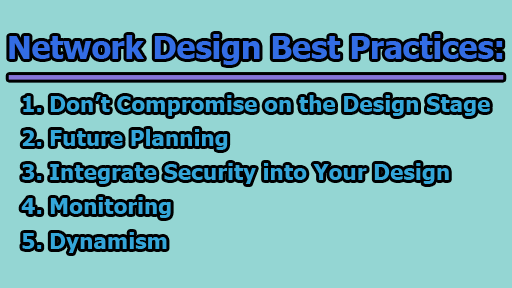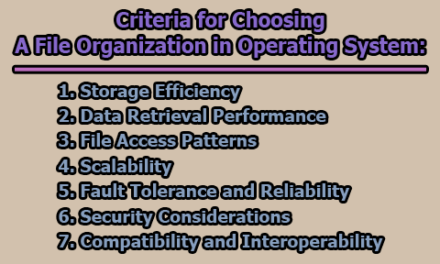Network Design Best Practices:
In the ever-evolving landscape of technology, an efficient and well-designed network is essential for the smooth operation of any organization. To guarantee optimal performance, scalability, and security, it is crucial to adhere to certain network design best practices. In this article, we will delve into network design best practices: ensuring efficiency, scalability, and security.
1. Don’t Compromise on the Design Stage: The foundation of a reliable and efficient network is laid during the design stage. One of the common mistakes organizations make is underestimating the significance of a comprehensive and thoughtful design. Networks cannot be created based solely on intuition; a physical blueprint and structural design are imperative. This meticulous approach ensures the efficiency of the network, allowing for seamless operation and planned expansions.
The design stage is the cornerstone where the organization’s current and future requirements are considered. It involves mapping out the network architecture, understanding the flow of data, and anticipating potential bottlenecks. This forward-thinking approach not only prevents immediate issues but also saves organizations from costly modifications down the line. By investing time, resources, and expertise at this crucial stage, organizations can ensure that their network is not only efficient but also scalable for future growth.
2. Future Planning: As technology continues to advance, the demand for network bandwidth is incessantly rising. The adoption of technologies such as the Internet of Things (IoT), video conferencing, and collaboration tools contributes significantly to this surge in bandwidth requirements. To build a network that stands the test of time, network designers must adopt a proactive and future-oriented mindset.
Future planning involves anticipating the organization’s growth, technological advancements, and the increasing demand for data. The network design should be scalable to accommodate these evolving requirements seamlessly. This requires a deep understanding of emerging technologies and trends to ensure that the network can support them without compromising performance. A network designed with future planning in mind becomes a resilient infrastructure that adapts to the ever-changing landscape of technology.
3. Integrate Security into Your Design: In an era where cyber threats are becoming more sophisticated and prevalent, network security is not a feature that can be added as an afterthought. Instead, it must be an integral part of the network design from its inception. Embedding security measures at the core of the design ensures that the network is built with a robust defense against potential threats.
This involves identifying potential vulnerabilities and implementing security protocols and measures to mitigate risks. Clear instructions and regulations for the implementation of security practices should be established, covering aspects such as access controls, encryption, intrusion detection systems, and regular security audits. By integrating security into the design, organizations can create a network that is not only efficient but also highly resilient against cyber threats.
4. Monitoring: A well-designed network is not a static entity but a dynamic ecosystem that requires constant monitoring to ensure optimal performance. Network monitoring involves the systematic observation of network activities, performance metrics, and security parameters. By planning for comprehensive monitoring during the design phase, organizations can gain real-time insights into their network’s behavior.
Proactive monitoring enables the identification of issues before they escalate, ensuring that the network operates at peak efficiency. This involves the deployment of monitoring tools that track network traffic, analyze performance metrics, and provide alerts for potential problems. Whether it’s detecting unusual patterns, identifying potential security breaches, or optimizing network resources, monitoring is an indispensable aspect of network design best practices.
5. Dynamism: While stability is essential, network designers must also embrace dynamism to stay ahead of the curve. The digital landscape is marked by rapid technological advancements, and organizations need networks that can swiftly adapt to new methods and technologies. This requires a balance between stability and flexibility in the network architecture.
Dynamism in network design involves creating an infrastructure that can seamlessly integrate new technologies without causing disruptions. This could include the adoption of software-defined networking (SDN) or other flexible architectures that enable quick adjustments to meet changing requirements. The ability to adapt to beneficial new methods positions the network as a competitive edge for the organization, allowing it to leverage advancements for improved performance and efficiency.
In conclusion, adhering to network design best practices is vital for organizations seeking to build and maintain efficient, scalable, and secure networks. By emphasizing thorough planning, future-proofing, security integration, monitoring, and dynamism, organizations can create a network infrastructure that not only meets current requirements but also adapts seamlessly to the challenges and opportunities of the future. A well-designed network is a strategic asset that enhances organizational performance and competitiveness in today’s rapidly changing technological landscape.

Library Lecturer at Nurul Amin Degree College










